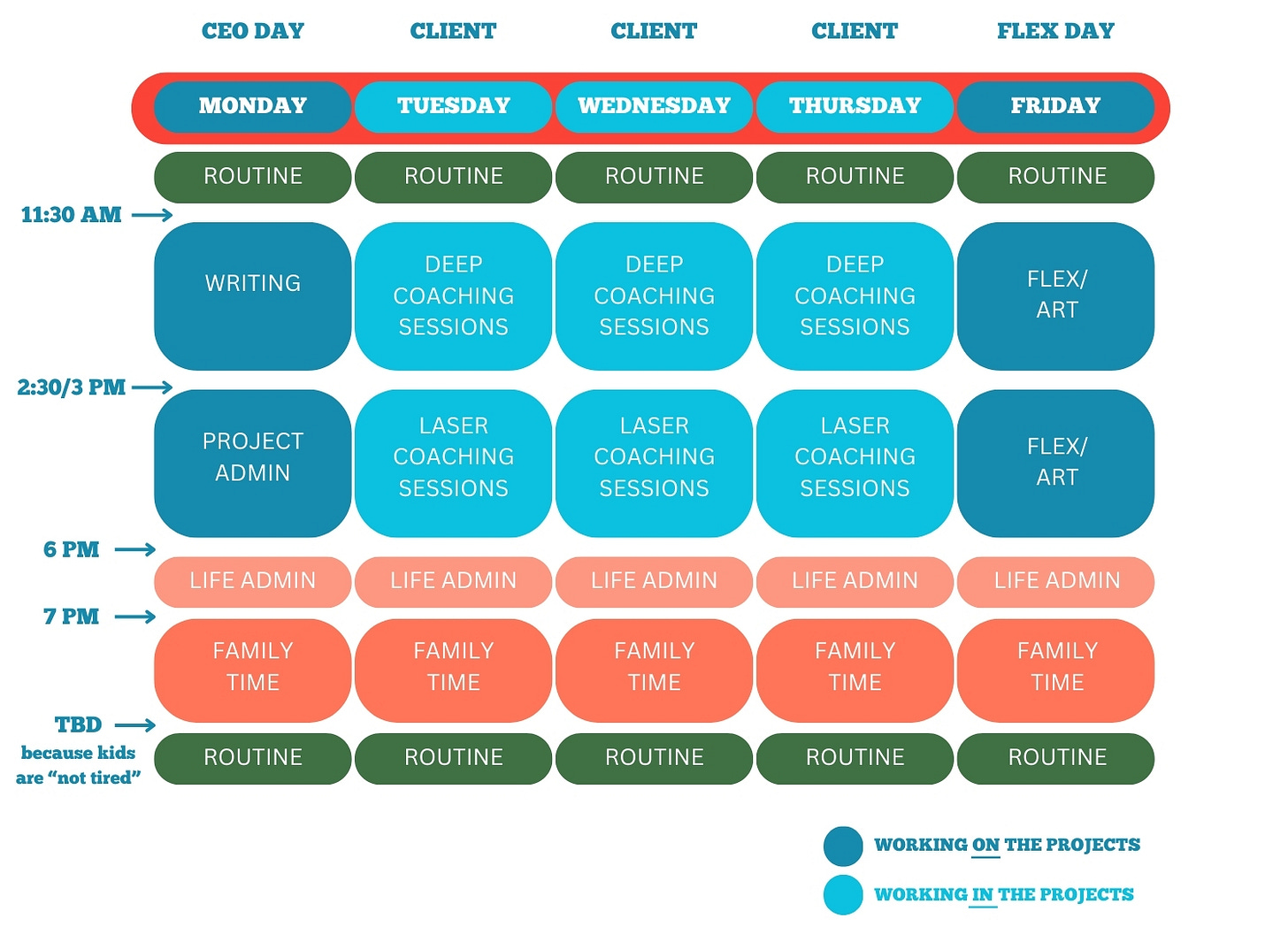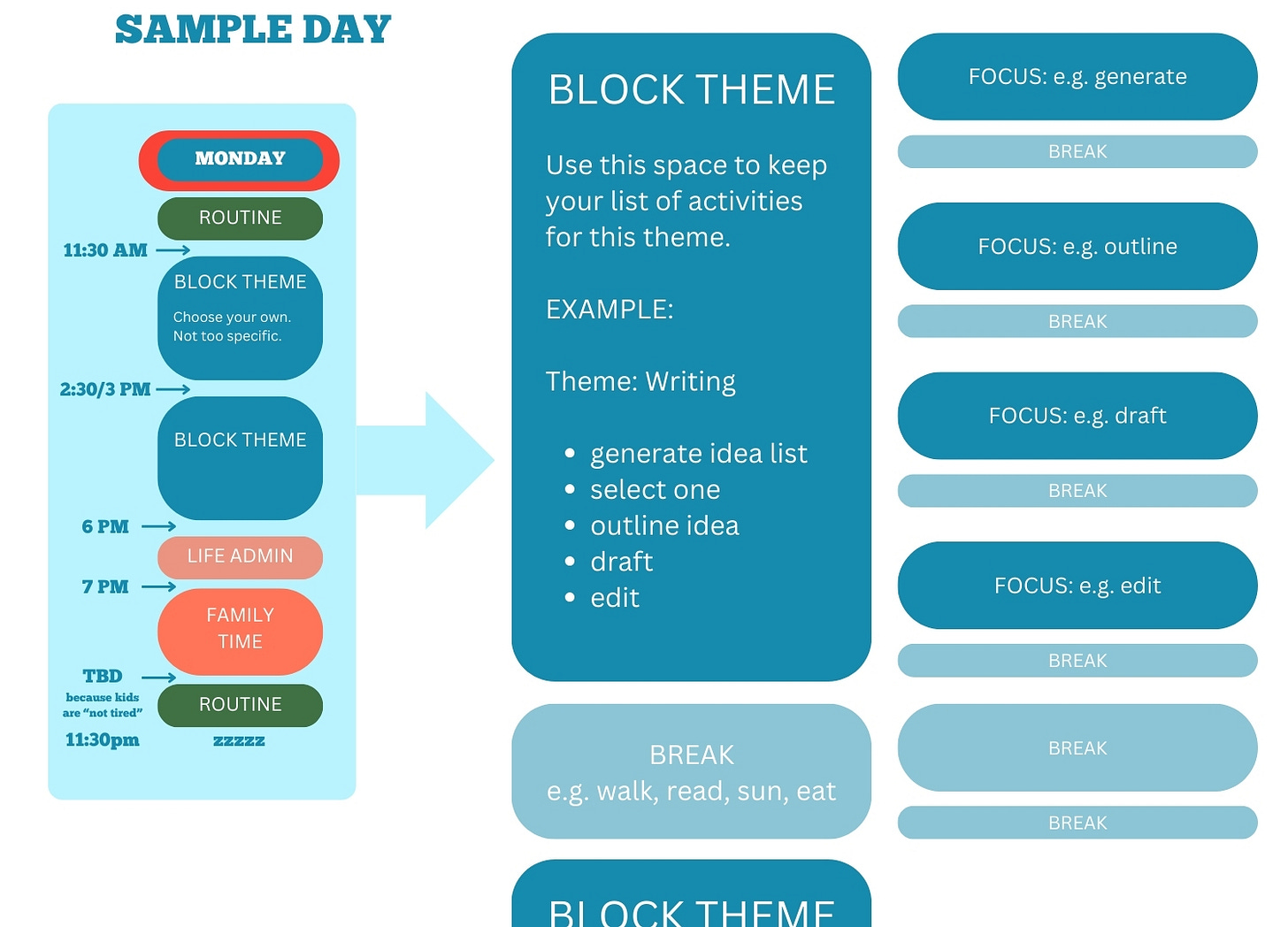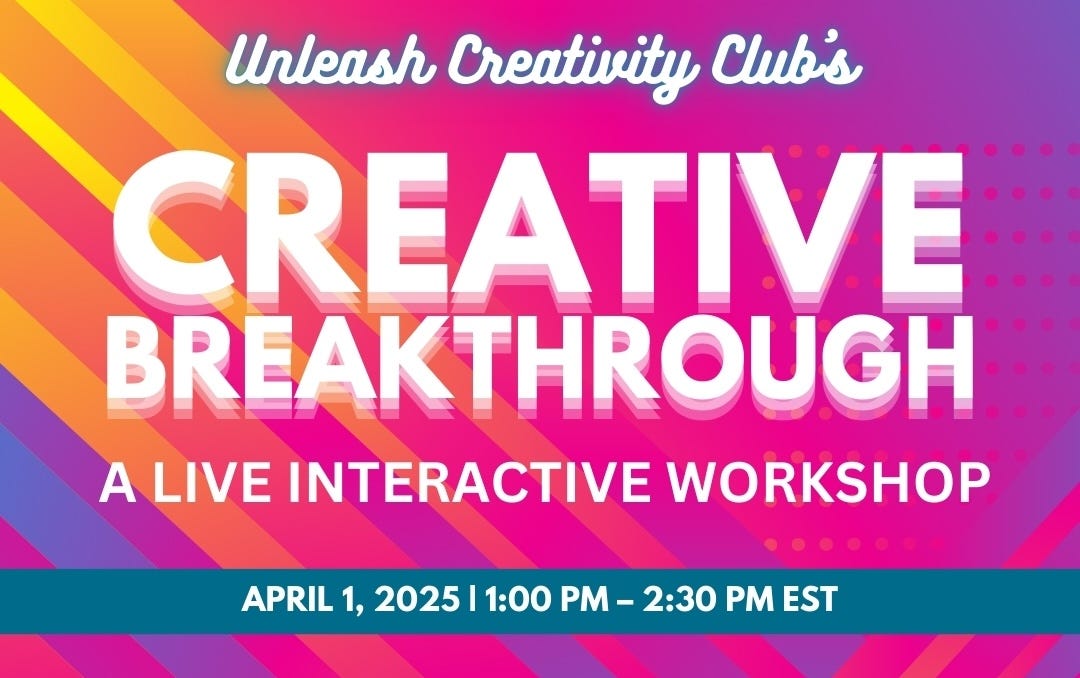Stop Working So Much
Work less, with better results
In 2022, I was getting a lot done. Yet I felt like I was always falling behind. I'd finish each week with the same todo list as I started. I had projects I wanted to complete and week after week wasn't able to start. I wasn't afraid of starting, but I wasn't.
Creative time isn’t optional—not for me, not for you. It’s what keeps us moving. And being in motion creates a mess of optional paths to fulfillment and success.
I needed it back.
In 2022 during an impactful coaching session I came up with a way to protect my creative time, I called It Focus Blocks. I gained back 10+ hours a week, and got stretches of time to get the most from my creative output.
Systems are like cars, they require maintenance and tweaking to last.
Last week, a client started using Focus Blocks in a new way with a flavor that might help you if you're struggling with traditional Focus Blocks.
FOCUS BLOCKS
Here's how traditional Focus Blocks work.
You create "buckets" during your week for KINDS of tasks.
Add your todos into the right buckets.
You can do this as part of weekly planning or just as tasks pop into your head, write them in a place you’re keeping todos to put into buckets laterIf something interrupts the time in a block, you just put it in the right bucket and stay focused on the block you're in.
Here's an example of Focus Blocks:
I have a teenager. Teenagers have no sense of boundaries when they want something. If he needs an answer, a food, more screen time, he texts me. Over, and over, until he gets it. No amount of "I cant right now" ended the madness.
In my focus blocks I created time for "life admin." When my son blew up my phone, I could say "I will do it at 6:30" and drop the task in the right time on my calendar.
With blocks, I wasn't tempted to just drop it an open spot and get to the end of my week wondering why all I did was admin in front of me.
WHERE FOCUS BLOCKS FAIL
They fail when long blocks work against you. Focusing for hours at a time... yeah I don't, for most things.
I'll admit sheepishly that focusing on a single task for 2 hours is a challenge for me. With a 2-3 hour block it's not wild to imagine spending 90% of the time working up to the task. But that's how it is, and if you can relate, there IS a way to get more done AND get more time.
What I noticed is that, with long blocks the actual tasks were usually shorter and COULD be chucked down even further.
THE PROBLEM WITH LONG FORM FOCUS BLOCKS
The issue isn’t that we don’t have time. It’s that we get pulled into things and lose track of time.
We dive into a project, look up, and it’s been five hours and we forgot to eat.
We get put things aside, and suddenly, we’ve been “working” for six hours but got nothing done.
We push through exhaustion, thinking, Just a little longer… and end up fried for the rest of the day.
The result? Burnout, decision fatigue, and a bunch of half-finished projects.
THE UPGRADE: POMODORO BLOCKS
I was talking to a client recently about how he is using Focus Blocks, and the way he modified the game is worth sharing.
First, the result: he was lighter, felt more in control of his time, and wasn't getting lost in tasks for too long.
That hit me. Because for most creatives, time management isn’t just about getting more done. It’s about not feeling like a dried-out husk of a human by 6 PM.
So I asked him what was working.
He’s using a combination of Focus Blocks and the Pomodoro method inside his Focus Blocks, and it’s pure brilliance. Here’s why.
HOW POMODORO SUPERCHARGES FOCUS BLOCKS
In case you’re new to it, the Pomodoro method is a simple cycle:
🔹 25 minutes of focused work
🔹 5-minute break
(Repeat 4x, then use a block or two for a longer break)
It was invented by Francesco Cirillo, a university student in the late 1980s. Like many students he was overwhelmed with assignments and intense study schedules, with too much to do and too little focus—sound familiar?
Here’s why it works:
🔸 Focus Blocks give you structured time to work on what matters.
🔸 Pomodoro gives you a rhythm inside that time so you don’t burn out.
The benefits are clear:
👉 More structure → Fewer distractions.
👉 Easier to start → Less mental resistance/energy with shorter sprints.
👉 More done → Less time wasted in long less-structured blocks
👉 More flexible → Need a break, swap a break block with a sprint/focus block
👉 More sustainable → No more working until you collapse.
👉 Better planning → Smaller blocks forces you to break down big projects or tasks
👉 More interesting → Smaller sprints generates “interest-based” focus feelings
Sidebar: regular short breaks ALSO allow you to assess whether or not you need to sink more time into something or if it's a good stopping point. It’s a regular check in where you can pivot to something different and put something down for now or call it done. No more looking up after 5 hours wondering why you only got one thing done.
Instead of aimlessly hoping for a productive day, you’re setting the conditions for one—without forcing yourself into rigid schedules that don’t work for creatives.
Now, when an interruption comes up, you have clear choices:
🚀 "Yes, this fits into my next block!"
🚫 "No, this would throw off my focus."
📅 "Yes, but in a later block—when I have a better time for it."
Instead of being at the mercy of his day, his day is working for him.
HOW TO SET THIS UP FOR YOURSELF
First, don’t wait for the perfect moment—just start messy. I started mine on a napkin and pencil. Now? I wrote this article using this method.
Block your time – Set Focus Blocks for big categories of work (creative work, admin, learning, etc.).
Work in Pomodoro cycles – Inside those blocks, use 25-minute work sprints + 5-minute breaks.
Protect your focus – If something pulls at your attention, write it down to handle later.
Stop BEFORE you're drained – End the day with energy left for yourself.
WORK SUSTAINABLY, NOT JUST PRODUCTIVELY
If you’ve been riding the hustle → burnout → repeat rollercoaster, this is your way off.
This isn’t about squeezing the last drop of productivity from your brain. It’s about building a rhythm that gives more than it takes.”
So if you’ve been feeling like you’re always working but never getting ahead—try this. It might just be the thing that keeps you creating, growing, and enjoying your life at the same time.
WHAT'S YOUR SYSTEM?
What’s your system?
Do you overwork and crash?
Or do you have a rhythm that supports your best work?
Hit reply and let me know—I’d love to hear how you structure your time.
Creatively yours,
-Marc
P.S. If you want custom strategies to help you protect your energy and maximize your creativity, join our Creative Breakthrough Workshop next week!






